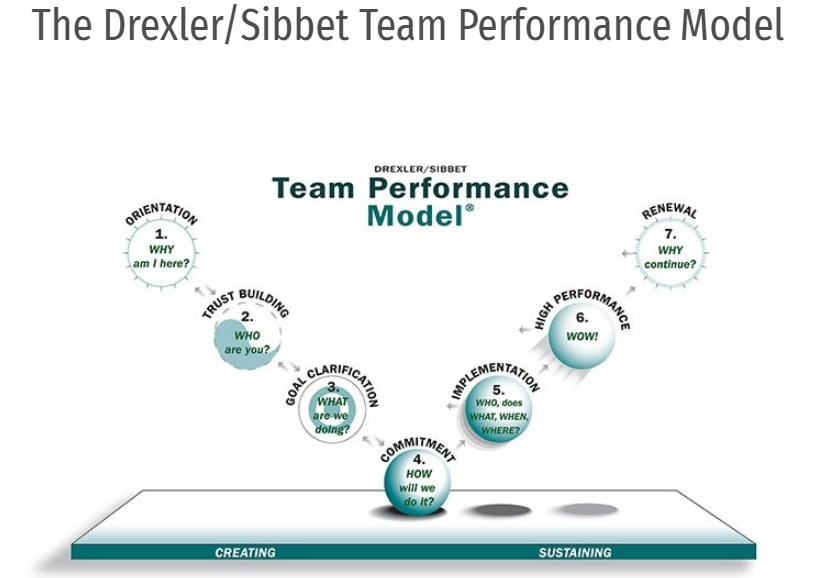Drexler/Sibbet Model for Team development and project management
(→Practical Approach) |
(→Practical Approach) |
||
| Line 44: | Line 44: | ||
==Practical Approach== | ==Practical Approach== | ||
| − | <ref> [''Using the Drexler/Sibbet Model''] ''https://www.youtube.com/watch?v=2d2JPIl_oBw&ab_channel=HartfordFoundation'' </ref> | + | Formulating a team is a process that takes energy, time and needs everybody involved into finding common grounds. <ref> [''Using the Drexler/Sibbet Model''] ''https://www.youtube.com/watch?v=2d2JPIl_oBw&ab_channel=HartfordFoundation'' </ref> |
==Reflections & Conclusion== | ==Reflections & Conclusion== | ||
Revision as of 20:49, 20 February 2022
Contents |
Abstract
Team development is the process through which a group is formed in order to achieve the goal of giving life to a successful project. Despite the skills of every member of the team, it is of great importance for it to reach high standards of teamwork and collaboration. There are different approaches and methods that can be implemented in forming a team and make it develop and work in a positive way.
This article investigates the method that Drexler and Sibbet proposed. Following a process of seven consecutive steps, teams can work together, achieve their goals, and finally make a positive impact to the development of a company and, eventually, even society. Each step matters and plays its role into transforming a group of good experts into a team that is setting goals and managing projects, programs or portfolios. 
Allan Drexler and David Sibbet suggested a team performance model with seven steps. Steps 1 to 4, describe the number of stages that need to take place in creating a project team. Through steps 5 to 7, they analyze project team sustainability and performance. [2]
Model Description
Step 1: Orientation.
Why is this team formed?
First and foremost, it is of vital importance for the scope of the project to be clarified during the first meeting of the new team. Everybody needs to have in mind the reason behind forming the team and the final goal to which the team is heading to.
Step 2: Trust building.
Who?
Through this stage, every team member finds out his/her colleagues, their skills and specific roles that they are going to serve during the project. In addition, the stakeholders of the project are analysed, since their influence may play a significant role while doing the project.
Step 3: Goal clarification.
What?
The analysis is taking place. The team is expected to take into account every aspect
In this stage, the project team elaborates the high-level project information. This may include finding out more about stakeholder expectations, requirements, assumptions, and deliverable acceptance criteria.
Step 4: Commitment.
Step 5: Implementation.
Step 6: High performance.
Step 7: Renewal.
Practical Approach
Formulating a team is a process that takes energy, time and needs everybody involved into finding common grounds. [3]
Reflections & Conclusion
References
- ↑ [Image of the Drexler/Sibbet Model] https://www.thegrove.com/methodology/team-performance-model
- ↑ [A Guide to the Project Management Body of Knowledge (PMBOK ® Guide) – 7th Edition and The Standard for Project Management - 4.2.6.2 Drexler/Sibbet Team Performance Model. (pp. 14). Project Management Institute, Inc. (PMI)] https://app.knovel.com/hotlink/pdf/id:kt012LZKY8/guide-project-management/drexler-sibbet-team-performance
- ↑ [Using the Drexler/Sibbet Model] https://www.youtube.com/watch?v=2d2JPIl_oBw&ab_channel=HartfordFoundation